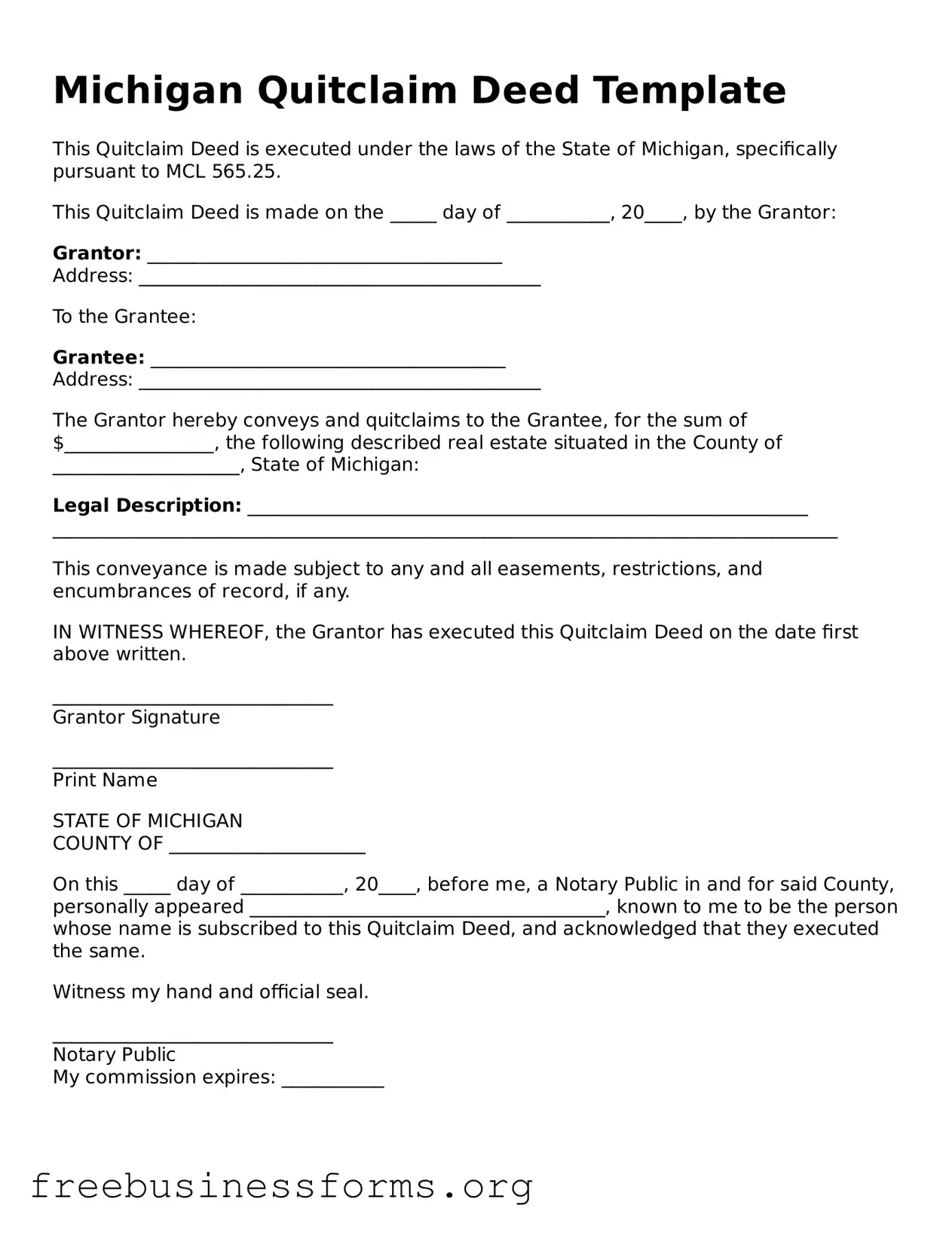Michigan Quitclaim Deed Template
This Quitclaim Deed is executed under the laws of the State of Michigan, specifically pursuant to MCL 565.25.
This Quitclaim Deed is made on the _____ day of ___________, 20____, by the Grantor:
Grantor: ______________________________________
Address: ___________________________________________
To the Grantee:
Grantee: ______________________________________
Address: ___________________________________________
The Grantor hereby conveys and quitclaims to the Grantee, for the sum of $________________, the following described real estate situated in the County of ____________________, State of Michigan:
Legal Description: ____________________________________________________________
____________________________________________________________________________________
This conveyance is made subject to any and all easements, restrictions, and encumbrances of record, if any.
IN WITNESS WHEREOF, the Grantor has executed this Quitclaim Deed on the date first above written.
______________________________
Grantor Signature
______________________________
Print Name
STATE OF MICHIGAN
COUNTY OF _____________________
On this _____ day of ___________, 20____, before me, a Notary Public in and for said County, personally appeared ______________________________________, known to me to be the person whose name is subscribed to this Quitclaim Deed, and acknowledged that they executed the same.
Witness my hand and official seal.
______________________________
Notary Public
My commission expires: ___________
